TLDR The study created a new system to classify Asian men's hairlines to help with hair loss treatment and cosmetic procedures.
The study analyzed the anterior hairline shapes and locations in 461 Asian males without androgenetic alopecia from various countries, including China, Japan, and South Korea. The researchers classified hairline shapes into M-shaped, rectangular, round, and wave-shaped, and hairline locations into high, middle, and low based on forehead ratio. A novel classification system was developed, with the most common types being MM (23.94%), RM (18.00%), and ML (11.04%), while the least common were OL (0.58%), OH (2.34%), and WH (2.74%). These findings aim to set standards for hairline evaluation, aiding in hair loss treatment, reconstructive surgery design, and cosmetic applications.
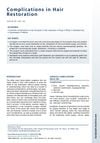 14 citations
,
November 2013 in “Facial Plastic Surgery Clinics of North America”
14 citations
,
November 2013 in “Facial Plastic Surgery Clinics of North America” Hair transplant complications can be avoided with proper training and understanding.
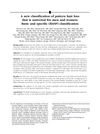 125 citations
,
May 2007 in “Journal of The American Academy of Dermatology”
125 citations
,
May 2007 in “Journal of The American Academy of Dermatology” The BASP classification is a detailed and accurate way to categorize hair loss in both men and women.
 21 citations
,
January 2000 in “Aesthetic Plastic Surgery”
21 citations
,
January 2000 in “Aesthetic Plastic Surgery” Researchers created a new system to classify male baldness, finding six types and a common hairline shape, to improve hair loss treatments.
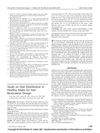 7 citations
,
October 2018 in “Journal of Craniofacial Surgery”
7 citations
,
October 2018 in “Journal of Craniofacial Surgery” About 21.3% of young, healthy Chinese men experience hair loss. Hairlines are mostly linear or have a central protrusion. Hair is densest on the top and back of the head, and hair follicles usually have 1 or 2 hairs. This information can help in designing hair restoration procedures.
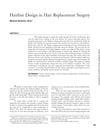 25 citations
,
November 2008 in “Facial Plastic Surgery”
25 citations
,
November 2008 in “Facial Plastic Surgery” Dr. Michael Beehner recommends a personalized, careful approach to hairline design in hair replacement surgery for a natural look.
 January 2017 in “Springer eBooks”
January 2017 in “Springer eBooks” The document explains various skin conditions and their treatments.
 January 2016 in “Georg Thieme Verlag eBooks”
January 2016 in “Georg Thieme Verlag eBooks” Hair transplantation in East Asians needs special techniques to ensure natural results and prevent complications due to their unique hair and scalp characteristics.
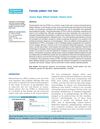 23 citations
,
January 2013 in “Indian Journal of Dermatology, Venereology and Leprology”
23 citations
,
January 2013 in “Indian Journal of Dermatology, Venereology and Leprology” FPHL causes hair loss in women due to genetics and hormones; minoxidil and anti-androgens are treatments, and early intervention is advised.








